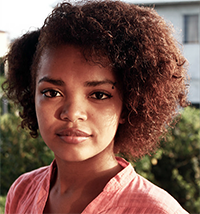By Akola Thompson
EVERY year, a considerable amount of women lose their lives, or some part of it, to domestic violence; and this year is no different.From the gruesome double-homicide of Vanessa Sookram and her two-year-old-son Joel Ganesh to the recent almost tragic incident of Selina Ramotar, who was stabbed approximately ten times about her body, there continues to be a worrying trend of total disregard for the lives of women and children.
With every death or maiming, society of course becomes outraged. The only problem with that is it seems to be the only time society becomes outraged, as society has learnt to view every case of domestic violence as an isolated occurrence, rather than merely a very small part of a very big disturbing picture.
We realise the extent of this belief through Sookram’s mother’s words when she stated that “everyone started to speak out” upon her daughter’s death. Details reported in certain sections of the media state that Sookram, aside from being constantly physically and verbally abused by her husband, was also constantly abused by his relatives. One was even said to have run after her with a knife after Sookram would have scolded baby Joel.
If ever there was a clear-cut case of how we continue to fail the abused by our silence in the face of abuse — and even our participation in it — it is the case of Vanessa Sookram and her son. Those two lives were brutally taken away, not only by the actions of a very disturbed man, but also because we have all grown up in a culture which not only normalises domestic abuse, but also trivialises it.
While Sookram’s community and we, as a larger public, might not have been the ones to wield the weapon which ended two lives way before their time, our silence and encouragement of the abuse might well have done it; and we need to begin examining the role we have all had in Vanessa’s and Joel’s death.
John Public, for the most part, is perfectly content to continue not only hiding abusers under the shelter of community, ‘family matters’ and ‘man-and-woman story’, but even encouraging it in ‘his’ home, without realising its significance.
I remember recently speaking to a friend on the issue, and she related that her partner hits her sometimes. According to her, it is never truly licks; just a slap here and a cuff there every once in a while when she angers him. This young woman is otherwise intelligent, but, for some reason, she feels that her partner has valid reasons for occasionally hitting her, and she has even sought to defend him. That is the one thing I may NEVER understand about domestic abuse.
Over the years, there have been many suggestions as to how to properly deal with domestic violence. As different as many of the suggestions are, they are still eerily familiar, as they seek to deal with the effects rather than the root cause of the problem, which lies in the institutionalized belief systems that women, being the weaker sex, deserve what they are getting.
Domestic violence is often blamed on the use and abuse of alcohol, drugs or mental issues; and while all of those do have roles to play in various instances of domestic abuse, the problem remains larger than those reasons. The cause of domestic violence remains a complicated mixture of psychological, social and cultural factors which cause a power imbalance between those who are in a relationship. Therefore, while campaigns aimed at encouraging sensitivity and the like among persons who would have witnessed abusive situations are good, no substantial changes would be made in the fight against domestic violence if ingrained cultural attitudes and behaviours are not challenged and changed.




.png)









